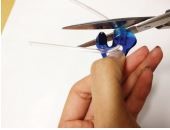Each person experiences hearing impairment differently- our audiologists are eager to work with you by listening to your experience and any difficulties that you may have- for which we hope to find a solution. We also work closely with Ear Nose and Throat and your GP to provide the best outcome possible for you.
We provide the following services:
- Hearing assessment after a referral from your GP or Ear Nose and Throat
- Hearing aids if you are identified as having a hearing impairment. We currently fit Oticon and Phonak hearing aids.
- We also provide specialist hearing aid services such as CROS and bone anchored hearing aid clinics. Find out more about bone anchored hearing aids (BAHAs)
- Quality aftercare once your hearing aids are fitted.
- Hearing therapy and tinnitus clinic.
- Advice on additional Bluetooth devices for use with your hearing aids for your landline, mobile phone and television.
- Cochlear implant referrals to Manchester and Birmingham centres.
Telephone and Video consultations
Prior to your hearing assessment, a telephone or video consultation take place in order to ask you questions about your hearing and any tinnitus that you may experience. Tinnitus clinics with our hearing and tinnitus therapist are also taking place using video consultations.
You will receive a letter in the post, a phone call or a text message informing you of the time of your appointment for a telephone or video consultation. If your appointment is taking place via video, you will receive a link and instructions on how to log on to the service. You may also someone with you during this appointment if you wish due to covid restrictions
Your audiologist will be able to advise you if you could benefit from a hearing aid. If you decide that a hearing aid would be helpful for you then it will be programmed to suit your hearing loss and your needs.
You will be notified whether your appointment will be face to face or virtual. If you are unsure whether your appointment is virtual or face to face, or if you have received a notification via text message which you would like to clarify, contact us at:
Telephone: 01782 674727
Text: 07768033637
Minicom: 01782 679445
Email: audiologydepartment.uhns@nhs.net




























